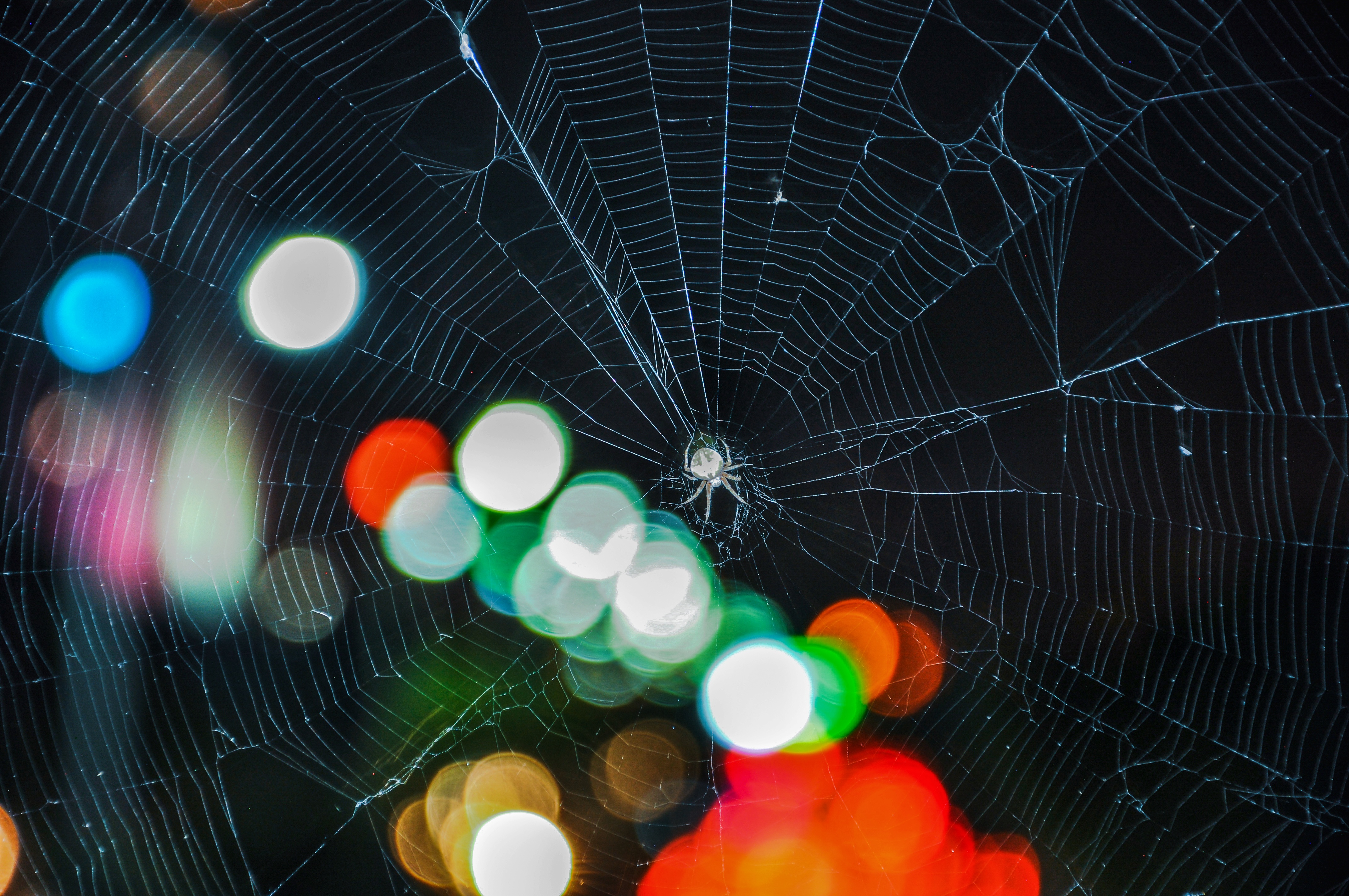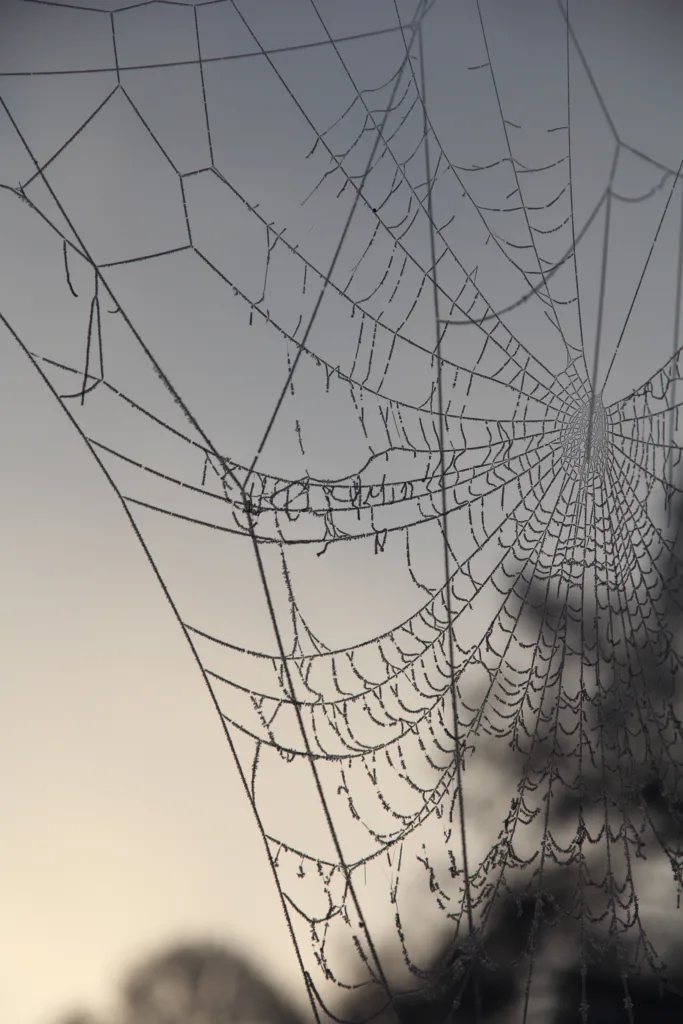Cobwebs are a common sight in many homes, and they often appar in hard-to-reach places such as corners, ceilings, and behind furniture. But how do these abandoned spider webs form?
To understand how cobwebs form, it’s important to first understand how spiders create their webs. Spiders produce silk from glands in their abdomen, which they use to weave intricate webs to catch their prey. As spiders move around, they leave behind strands of silk, which can accumulate over time to form a spider web.
However, not all spider webs are cobwebs. Cobwebs specifically refer to spider webs that have been abandoned by the spider that created them. This can happen for a number of reasons, such as the spider finding a better location for catching prey or simply dying.
Once a spider web has been abandoned, it can quickly collect dust and debris from the surrounding environment. This is why cobwebs often appear dirty or gray in color. Over time, the silk strands of the abandoned web can become brittle and break apart, creating the characteristic “cobweb” appearance.
While cobwebs are generally harmless, they can be unsightly and create a feeling of uncleanliness in a home. To prevent cobwebs from forming, it’s important to keep your home clean and free of clutter. Regular dusting and vacuuming can help remove spider webs before they have a chance to accumulate.
Cobwebs form when spiders abandon their webs and the silk strands accumulate dust and debris over time. While they are generally harmless, they can be unsightly and create a feeling of uncleanliness in a home. Regular cleaning and maintenance can help prevent cobwebs from forming in the first place.
Can Cobwebs Exist Without Spiders?
Cobwebs are commonly associated with spiders, as they are spun by these arachnids to serve as traps for their prey. However, it is possible for cobwebs to exist without spiders.
Cobwebs are essentially abandoned spider webs that are no longer in use by the spiders. When spiders move to a new location or die, their webs are left behind and can accumulate over time. These abandoned webs can still be referred to as cobwebs, although they are no longer actively beig used to catch prey.
In addition, there are other types of insects that can spin their own webs, such as moths, beetles, and lacewings. These webs may not be as intricate or sticky as spider webs, but they can still accumulate and create a similar appearance to cobwebs.
It is also possible for dust and debris to collect in corners and crevices of a room, creating a cobweb-like appearance. While these are not technically cobwebs, they can still resemble them and be mistaken for spider webs.
While cobwebs are typically associated with spiders, they can exist without spiders. Abandoned spider webs, webs spun by other insects, and accumulations of dust and debris can all create a cobweb-like appearance.

The Causes of Excessive Cobweb Formation in Homes
Cobwebs are a common sight in most households. Many people wonder why their houses get so many cobwebs, and the answer lies in the behavior of spiders and insects.
Spiders are natural predators of insects, and they enter homes to hunt for their prey. It’s common to find spiders spinning webs in corners, windows, and other areas where insects are likely to be found. When spiders catch their prey, they consume it and leave behind the web, which is known as a cobweb.
Insects, on the other hand, enter homes in search of food and shelter. They are often attracted to light and warmth, which can lead them to homes. Once inside, they find food sources like crumbs or other organic matter, which can sustain them for days. However, this also attracts spiders, who see the insects as a food source.
If you have a pest problem in your home, you are more likely to have cobwebs. Spiders will spin webs in areas where they are likely to catch insects, and if there are a lot of insects, there will be more cobwebs. To prevent cobwebs, it’s important to control the insect population in your home.
Here are some tips to prevent cobwebs:
– Keep your home clean and free of clutter to reduce hiding places for insects.
– Seal cracks and crevices in your home to prevent insects from entering.
– Use screens on windows and doors to prevent insects from entering.
– Vacuum regularly to remove cobwebs and insects.
– Use insect repellents to keep insects away from your home.
– Consider using a pest control service to eliminate insects from your home.
By folowing these tips, you can reduce the number of insects and spiders in your home and prevent cobwebs from forming.
Preventing Cobwebs from Forming
Cobwebs are not only unsightly, but they can also be a nuisance. They can collect dust and debris, and make your home look unclean. Fortunately, there are several ways to prevent cobwebs from forming.
1. Clean Your Home’s Exterior Regularly: Sweeping or power washing your home’s exterior removes any dirt, debris or cobwebs that have formed. This will help ensure that cobwebs don’t have a chance to accumulate.
2. Trap Non-Dangerous Spiders and Release Them Away from Your Home: Some spiders are beneficial, as they eat oher insects. However, some can be dangerous. If you have non-dangerous spiders in your home, trap them and release them away from your home. This will help reduce the spider population and, in turn, the cobweb population.
3. Clean Your Home Regularly: Regular cleaning of your home’s interior will help prevent cobwebs from forming. Dusting, vacuuming, and sweeping regularly will remove any cobwebs that have formed.
4. Avoid Outdoor Clutter: Clutter, such as piles of leaves or debris, can provide an ideal environment for spiders to build webs. Removing clutter from your yard will discourage spiders from building webs in your outdoor spaces.
5. Adjust Your Outdoor Lighting Fixtures: Spiders are attracted to light, so adjusting your outdoor lighting fixtures can help prevent them from building webs in those areas. Consider using yellow or sodium vapor lights instead of white lights.
6. Create Homemade Sprays: There are several natural sprays that can be made at home to repel spiders. These include peppermint oil, vinegar, and essential oils. Simply spray the solution in areas where spiders are likely to build webs.
7. Buy Bug Spray or Cobweb Eliminators: There are several bug sprays and cobweb eliminators available on the market that can help prevent cobwebs from forming. These products should be used according to the manufacturer’s instructions.
8. Keep Your Yard Clean: Regularly mowing your lawn, trimming bushes, and removing debris from your yard will help prevent spiders from building webs. This will also make your yard less hospitable to other insects, which will reduce the spider population.
Preventing cobwebs from forming requires a combination of regular cleaning, eliminating clutter, and using natural or chemical solutions. By following these tips, you can keep your home and yard free of cobwebs and other pests.
Do Spiders Create All Cobwebs?
The short answer to the question is yes, all cobwebs are created by spiders. However, it’s important to understand the difference beween spiderwebs and cobwebs. Spiderwebs are the intricate, sticky structures that spiders spin to catch their prey. On the other hand, cobwebs are old, abandoned spiderwebs that have collected dust and debris over time.
When a spider creates a web, it uses its spinnerets to produce silk, which is then woven into a variety of shapes and patterns to create the web. The silk is incredibly strong and sticky, which makes it an effective trap for catching insects and other small creatures. However, if the spider moves on or dies, the web is eventually abandoned and becomes a cobweb.
Cobwebs are typically characterized by their dusty appearance and lack of structural integrity. They are often found in neglected or abandoned spaces, such as attics, basements, and unused rooms. While cobwebs may look unsightly, they do serve a purpose in trapping dust and other airborne particles, which can improve indoor air quality.
All cobwebs are created by spiders, but not all spiderwebs become cobwebs. Spiderwebs are the active, functional structures that spiders use to catch their prey, while cobwebs are the abandoned remnants of those webs that have collected dust and debris over time.

Conclusion
Cobwebs are formed when spiders abandon their webs and move on to a new location. The sticky silk of spiderwebs is excellent at collecting dust, which is why abandoned webs can accumulate over time and become what we commonly refer to as cobwebs. These abandoned webs can be found in various areas of our homes, especially in corners or areas with little activity. To prevent cobwebs from forming, it is important to keep our homes clean and free of insects, which are the main source of food for spiders. Regular cleaning and decluttering can go a long way in keeping our homes free of cobwebs and other pests.
